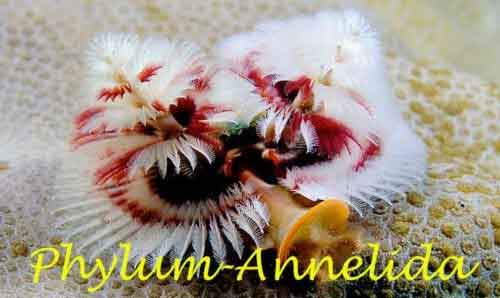The representatives of the phylum Annelida are known as segmented worms or ringed worms. Annelida is derived from Latin word ‘anellus’ meaning little ring. It is a large phylum with over 22,000 living species. Among them, Polychaetes constitute about 12,000 species while Clitellates contains about 10,000 species. The major groups include earthworms, ragworms and leeches. The size of the body varies from microscope to 3 miters. The largest annelids are Australian giant Gippsland earthworm (Megascolides australis) with 300 to 400 body segments which can grow up to 3 meters.
General characteristics of Phylum Annelida
- They have homonomous metamerically segmented body.
- They are mostly aquatic but some are terrestrial.
- They have red colored body due to the presence of haemoglobin in blood.
- The body has three regions such as prostomium, trunk and pygidium. In this case, prostomium contains distinct head which bears tentacles, eyes etc.
- Trunk region contains a longitudinal series of similar segments.
- They are triploblastic organisms with true coelom. In this case, coelom is of schizocoelic origin which is divided segmentally into compartments by septa.
- The body wall is covered by fibrous collagenous cuticle which supports epidermis, dermis, musculature and parietal peritoneum relatively.
- They have chitinous bristles, also known as setae which project out from the epidermis that helps the body to grab on the substratum during locomotion.
- They have complete digestive system. In this case, alimentary canal is straight and muscular type with digestive glands which occurs in the walls of the alimentary canal.
- Respiration occurs through the body wall and gills (diffusion process). In many cases, parapodia are modified to form gills for respiration.
- They have closed type blood vascular system. In this case, blood often contains a respiratory pigment.
- Metanephridia are the excretory organs which are arranged segmentally and open into coelom by nephrostome.
- Nervous system is well-developed which consists of a dorsal, bilobed brain and a pair of connective nerves. The nerves encircle the digestive tract and collectively to form a ganglionated double ventral nerve cord with one ganglion per segment.
- They have sensory structures which include eyes and simple receptors like photoreceptors, chemoreceptors and mechanoreceptors.
- Fertilization may be internal or external.
- Development may be direct or indirect. When sexes are separate, they show direct development with no larval stage. When sexes are united, they show indirect development with a larval stage (Trochophore larva).
- Cleavage is spiral and holoblastic type.
You might also read: Animal Classification
Classification of Phylum Annelida
On the basis of setae, parapodia, metameres and other morphological traits, phylum Annelida is classified into following three main classes:
- Class-1: Polychaeta
- Class-2: Oligochaeta
- Class-3: Hirudinea
Class-I: Polychaeta (Gr.polys=many, chaite=hair)
- This class contains more than 6,000 living species.
- They are free-moving and sedentary tube-dwelling organisms.
- The representatives of this class are commonly known as bristle worms.
- They are mostly marine organisms but a few live in fresh water.
- Body is segmented which contains lateral paired appendages or parapodia for locomotion. Parapodium bears numerous long setae as bundles that help in fixation.
- Head is distinct which consists of two pairs of eyes, palps and tentacles.
- Body is bilaterally symmetry with true coeloms.
- Digestive system is complete and circulatory system is closed type.
- They have well-developed nervous system while excretory system consists of both metanephridia and protonephridia.
- The body does not have clitellum.
- The sexes are separate and fertilization is external.
- Development shows larval stage; larva is free-swimming, lknown as trochophore larva.
- Gonads are present in most of the body segments but some species do not contain gonads.
Examples: Neanthes succinea ( the sandworm), Chaetopterus variopedatus (the paddle worm) etc
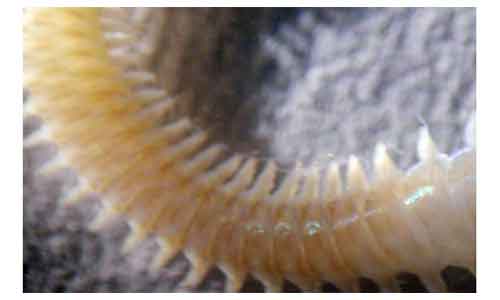
Neanthes succinia
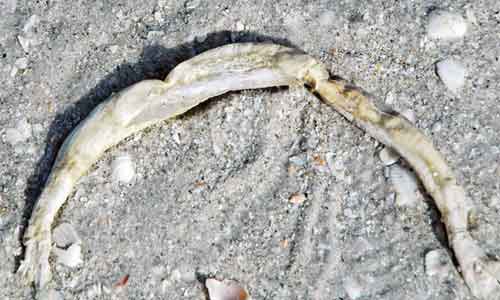
Chaetopterus variopedatus
Order-1: Aphroditamorpha
- They are commonly known as scale worms.
- They are widely distributed free-moving and segmented marine worms.
- Head bears 1 or 3 tentacles, 2 palpi and 4 tentacular cirri used for feeding and respiration.
- The size of the worm ranges from 0.5 to 25 cm (0.2 to 10 inches).
- The back is somewhat arched with flattened pairs of overlapping scales.
- They have extended proboscis or snout.
- They have soft, finger-like projections and four horny jaws
Examples:Aphrodita aculeata (sea mouse), Halosydna galapaginas (common scale worm), etc.
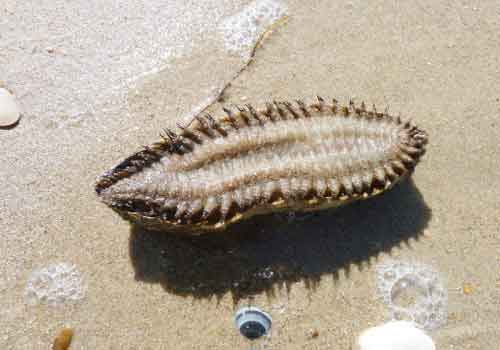
Aphrodita aculeata (sea mouse)
Order-2: Amphinomida
- They are free moving organisms.
- Prostomium bears 1-5 antennae, 2 palpi and a caruncle.
- Parapodia have two lobes and branchiae (gills).
- The size of body ranges from 0.5 to 35 cm.
Example:Eurythoe complanata (fireworm)
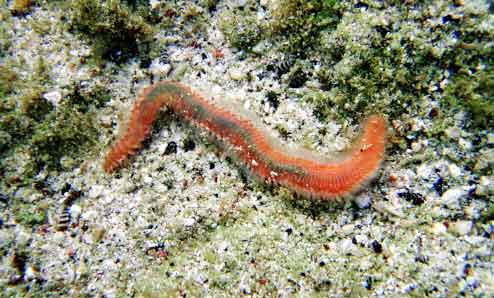
Eurythoe complanata (fireworm)
Order-3: Spintherida
- They have small oval body with median antenna on prostomium.
- Pharynx is retractable in nature.
- Dorsal side bears membranous ridges while ventral setae are strongly curved.
- They are found on sponges with single genus Spinther.
Example:Spinther alaskensis
Order-4: Phyllodocida
- They are mostly marine but some are found in brackish water
- They are free moving organisms with a protrusible proboscis.
- Prostomium bears 1 to 5 antennae, with palpi, and with 0 to 3 pairs of eyes.
- Body is segmented and each segment bears a pair of paddle-like parapodia.
- Parapodia are well developed into 1 or 2 lobes with usually compound setae.
- The size ranges from 0.2 to over 1 m.
- This order includes about 3500 species.
Example:Pelagobia longicirrata, Glycera dibranchiata (Bloodworm)
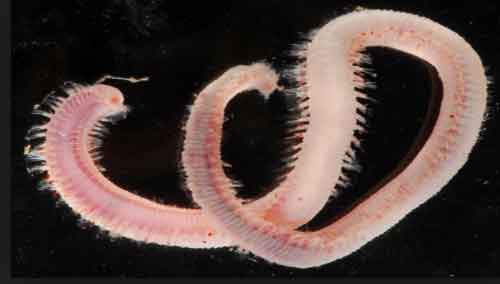
Glycera dibranchiata (Bloodworm)
Order-5: Eunicida
- They have an elongated, segmented body with a distinct head.
- The palps are globular to cylindrical in shape.
- Head bears 0 to 7 antennae which are usually smooth but occasionally jointed.
- Parapodia are single-lobed often with many needlelike structures which are known as aciculae.
- The body length ranges from minute to 3 m.
Example:Stauronereis incertus, Lumbineris flabellicola
Order-6: Orbiniida
- The body is elongated with anteriorly broad and flat.
- The posterior end of the body is slightly flattened dorsally and rounded ventrally.
- Head is pointed or rounded with no appendages.
- Proboscis is eversible and unarmed.
- Body is divided into distinct thorax and abdomen.
- Gills are present which arise dorsally from thoracic region.
- The body length ranges from minute to 40 cm.
Examples: Scoloplos armiger, Paraonis fulgens
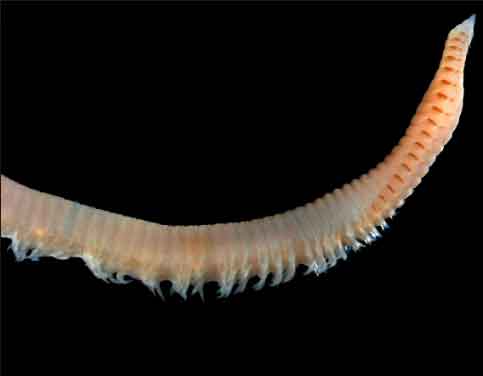
Scoloplos armiger
Order-7: Spionida
- They are sedentary marine polychaetes that live in mud, holes bored in rocks, and shells of shellfish.
- The body is elongated wnd the prostomuim bears two long feeding tentacles which are used for grasping food.
- The mouth does not have jaws and the pharynx is partly eversible.
- The parapodia have large lamellae.
- Some species bears small eye spots while some have a central sensory lobe.
- Some of the anterior body segments bear paired gills.
- The body length ranges from 0.5 to 25 cm.
Example:Spio filicornis, Polydora cornuta
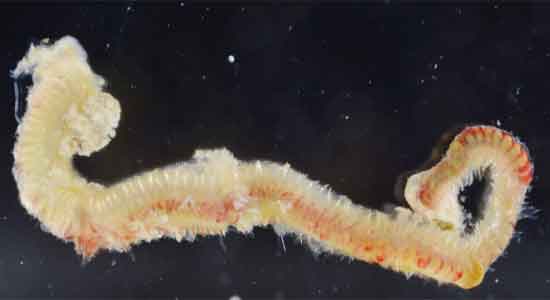
Polydora cornuta
Order-8: Chaetopterida
- They are tube dwelling marine polychaetes.
- The body has 2-3 distinct body regions.
- Prostomium bears palpi.
- Segment 4 has modified setae.
Examples: Chaetopterus variopedatus (parchment worm or parchment tube worm ), Spiochaetopterus typicus etc
Order-9: Magelonida
- They have long slender body with two regions.
- Prostomium is flattened that bears two long palpi.
- Palpi arise from the ventral surface at the junction of the prostomium and next segment.
- They are burrowing dwellers which are found in intertidal muds and sands within 100 m depth range.
- Abdominal hooded hooks are tridentate.
Example: Magelona papillicornis
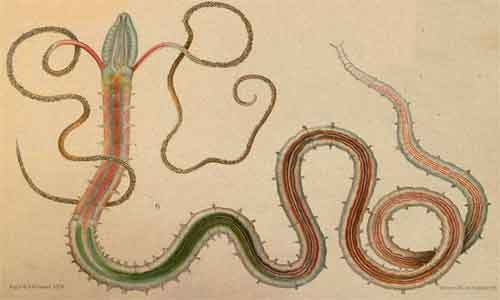
Magelona papillicornis
Order-10: Psammodrilida
- They are meiofaunal polychaete annelid.
- Head is elongated with rounded prostomium that bears cilia which forms a ring.
- Prostomium and peristome do not have appendages.
- No nuchal organs are found.
- A pair of pits is present at the end of ciliated periostomium.
- Parapodia of mid region are long which are supported by aciculae.
Examples: Psammodrilus fauveli, Psammodrilus balanoglossoides
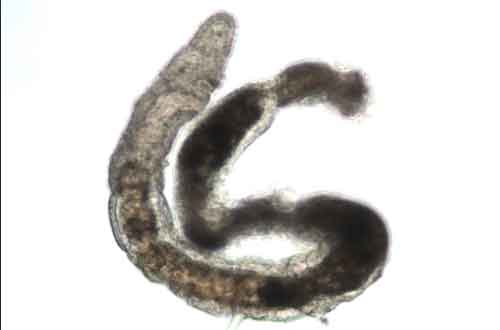
Psammodrilus balanoglossoides
Order-11: Ctenodrilida
- They are commonly known as ‘bristle worms’.
- They are marine organisms which live in small tube made frommud or similar substrate, or burrow in the sand.
- They have no prostomial appendages with no parapodial lobes.
- Setae are simple in size which arises directly from body wall.
Example:Ctenodrilus pardalis
Order-12: Cirratulida
- They are marine polychaete worms which are found worldwide.
- Generally, they live in mud or rock crevices.
- The body is cylindrical with tapering both ends.
- The head is conical or wedge-shaped that does not bear any antenna.
- Prostomium is pointed with no appendages.
- One or more pairs of tentacular cirri are present which arise from dorsal surface of anterior segments.
- Gills are long and slender if present.
- The body length ranges from minute to 20 cm.
Examples:Cirratulus cirratus, Cirriformia tentaculata
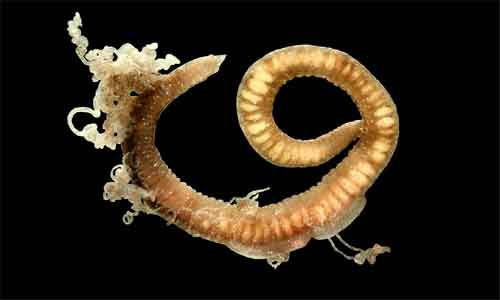
Cirratulus cirratus
Order-13. Cossurida
- They are small group of polychaetes which inhabit shallow to deep water in muddy sediments.
- They have unpaired branchial filament with peculiar feeding apparatus.
- They have eversible mouth tentacles which are attached to the dorsal side of the buccal cavity.
- Parapodia are biramous with weakly developed lobes.
- They have no prostomial appendages.
- The body length is less than 2 cm.
Example:Cossura longocirrata
Order-14: Opheliida
- They are marine polychaetes with no prostomial appendages.
- The body is elongated with limited number of segments.
- The body bears simple setae.
- The body length ranges from 1-10 cm.
- They inhabit in muddy substrate, sand or between stones and shells.
Examples:Ophelia bicornis, Polyophthalmus pictus, Scalibregma inflatum (T headed worm)
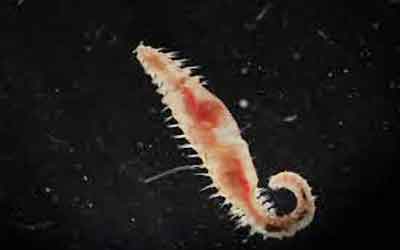
Scalibregma inflatum (T headed worm)
Order-15: Capitellida
- They are polychaete worms grow up to 20 cm or more.
- They inhabit within lower shore to sub-littoral region on muddy sand, gritty sand, fine sand or rich mud.
- The body is elongated with no prostomial appendages.
- The body is red in color with no setae at 1 or 2 anterior segments
- Parapodia are biramous with simple setae.
Examples:Capitella capitata, Notomastus latericeus
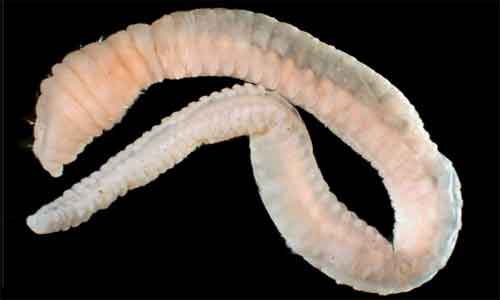
Capitella capitata
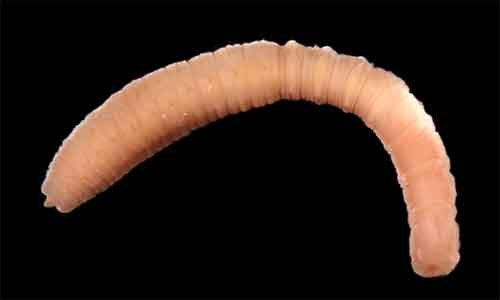
Notomastus latericeus
Order-16: Flabelligerida
- They are marine polychaetes that inhabit rocky and muddy bottoms.
- Prostomium and peristome are retractile, with 2 palpi.
- Setae of anterior segments are directed forward to form a cephalic (head) cage.
- The body length ranges from 1-10 cm.
Examples: Flabelligera affinis, Stylariodes plumosa
Order-17: Sternaspida
- They are marine polychaetes which inhabit in mud and other soft sediments.
- The body bears setae, of which anterior setae short and thick.
- Posterior end has ventral shield which bears radiating setae and anal branchiae.
- The body length ranges from 1-4 cm.
Example: Sternaspis scutata
Order-18: Oweniida
- They are marine polychate worms which live in tube made of sand.
- They are filter feeders grazers and detrivores.
- The head does not have a proboscis.
- The mouth bears some very short tentacles.
- The body segment does not bear any parapodium.
- The body length ranges from 02 – 10 cm.
Example:Owenia fusiformis
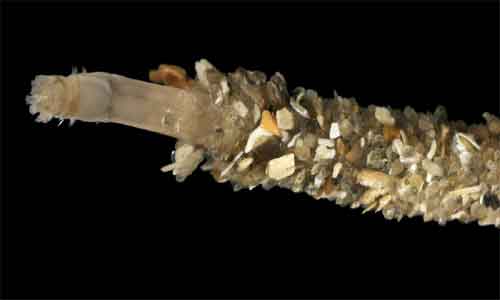
Owenia fusiformis
Order-19: Terebellida
- They are commonly known as bristle worms.
- They are marine polychaetes which live in small tube made frommud or similar substrate.
- The head is covered by filamentous tentacles.
- Branchiae are simple or branched which arise from dorsal surface of anterior end.
- The body is divided into two parts: into thorax and abdomen.
- The body length range from 1 – 40 cm.
Example: Terebella lapidaria
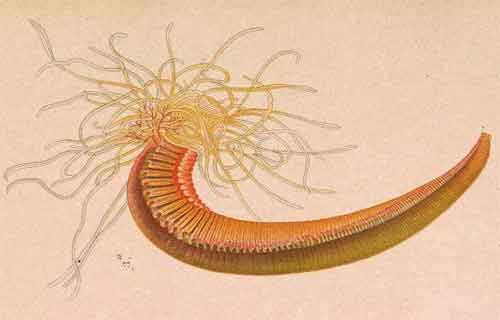
Terebella lapidaria
Order-20: Sabellida
- They are also known as feather dusters.
- They are marine polychaete worms with no buccal organ.
- They are filter feeders and the prostomium is fused with the peristomium which bears a ring of feathery feeding tentacles.
- The body is divided into thorax and abdomen while the head is covered with featherlike filamentous branchiae.
- They make parchment-like tubes to live which are made from sand and shell fragments together with mucus.
- The body length ranges from minute to 50 cm.
Examples: Sabella pavonina, Eudistylia polymorpha
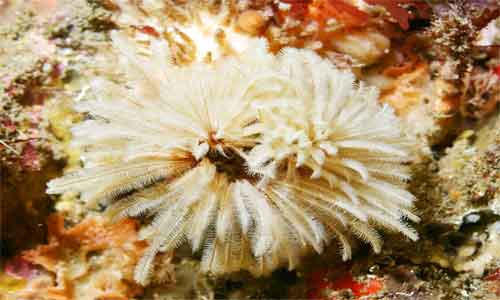
Eudistylia polymorpha
Order-21: Archiannelida (Arch; first)
- This class contains about one dozen genera.
- They mainly live in marine environment.
- They have narrow tube-like body which is metamerically segmented
- The body does not bear setae and parapodia.
- They are hermaphroditic organisms (sexes are separate).
- The development is indirect with larval stages (trochophore larva).
Examples:Polygordius appendiculatus, Dinophilus taeniatus
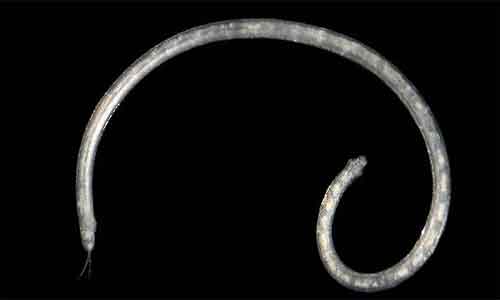
Polygordius appendiculatus
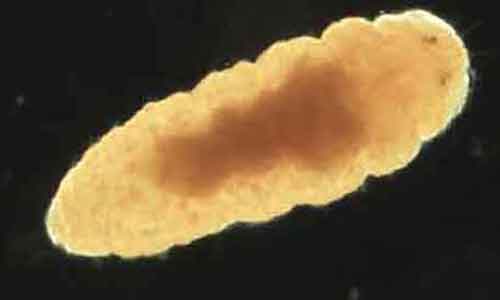
Dinophilus taeniatus
Order-22: Myzostomida
- They have flattened, rounded shape body without external segmentation.
- They have smooth dorsal surface while the ventral surface bears five pairs of parapodia.
- The parapodia have hooked setae.
- The body length ranges from minute to 1 cm.
Example:Myzostoma fuscomaculatum
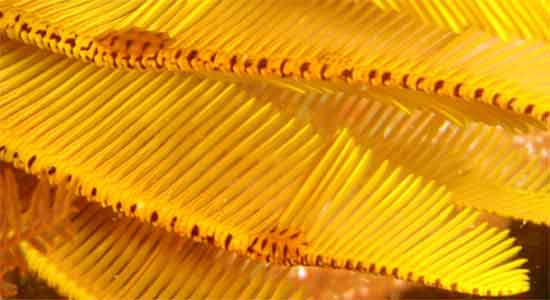
Myzostoma fuscomaculatum
Order-23: Poeobiida
- They are marine polychate worms.
- The body is sack-like which does not contain external segmentation.
- The anterior end of the body bears circle of tentacles.
- They are pelagic dweller with two internal body septa.
Example:Poeobius meseres
Class- 2: Oligochaeta (Gr. oligos=few, chaite=hair)
- They are well-segmented aquatic and terrestrial worms.
- This class contains around 10,000 known species.
- The body length varies from 0.5 mm to 3 meters. The giant Gippsland earthworm (Megascolides australis) can grow up to 3 m in length.
- They do not contain any appendages in their body.
- Body lacks parapodia but numerous small setae arise from setigerous which act as the locomotory organ.
- They are hermaphroditic animals with testis anterior to ovaries and their fertilization is external.
- Sexual organ, gonads with gonoducts are present only to some genital segments.
- Clitellum is present throughout the life and develops at sexual maturity which helpful in cocoon formation.
- Development is direct which does not show any larval stage.
- Reproduction occurs by copulation; they lay fertilized eggs in a cocoon secreted by clitellum.
Examples: Pheretima posthuma ( earthworm), Tubifex tubifex (the blood worm) etc.
Order-1: Lumbriculida
- They are commonly known as earthworms.
- They are microdrile oligochaetes which are commonly found in freshwater environments such as streams, lakes or marches.
- The body is elongated with several segmented.
- The body length ranges from minute to 40 cm.
Example: Lumbricus terrestris, Eisenia foetida
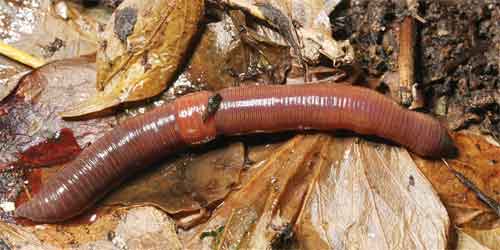
Lumbricus terrestris
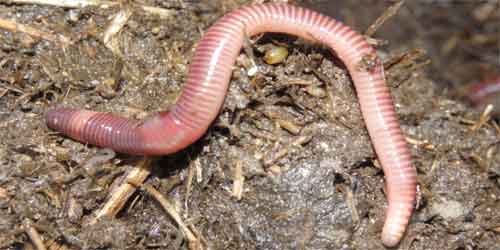
Eisenia foetida
Order-2: Moniligastrida
- They have elongated body with several segments.
- Each segment bears 4 pairs of setae.
- The body length ranges from minute to 3 cm.
- Male gonopores, 1 or 2 pairs on segment posterior to testes.
Examples:Moniligaster aiyeri , Drawida polydiverticulata
Order-3: Haplotaxida
- They are primarily aquatic annelid worms.
- The body is elongated with several segments.
- The male gonopores are located in segment immediately behind testes.
- Seminal receptacle is situated at or near segment containing testes.
- The body length ranges from minute 3 cm.
Examples: Nais elinguis
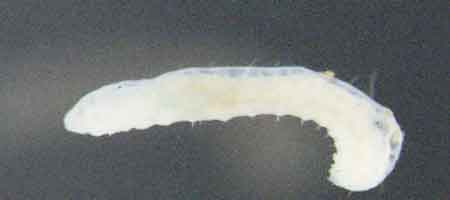
Nais elinguis
Class-3: Hirudinea (L. Hirudo=leech)
- This class contains about 300 living species.
- They are primarily live in freshwater, few in sea and other on moist land.
- They are haemocoelomate with open type of circulatory system.
- The body lacks a head and setae and bears definite number of segments (33 in number).
- The body does not contain parapodia, tentacles,and setae.
- Body bears small sucker at the anterior end and large sucker at the posterior end. In this case, both suckers are used in locomotion and for feeding blood.
- They are blood sucking ecto-parasites whose coelom is reduced due to the presence of nutrient-storing botryoidal tissue which is excretory in nature.
- Gonads with gonoducts are present in some genital segments.
- They are copulating hermaphroditic organisms (Sexes are separate) and they lay fertilized eggs laid in a cocoon secreted by clitellum.
- Body bears temporary clitellum which develops during the breeding season and is located in 11th to 19th segments.
- They have complete alimentary canal with many crop and caeca.
- Fertilization is internal, development is direct with no larval stages.
Examples:Hirudinaria javanica (cattle leech), Hirudo medicinalis (medicinal leech), Pontobdella muricata (fish leech) etc
Order-1: Branchiobdellida
- The body is elongated with 14 to 15 segments.t
- The head is modified as sucker with fingerlike projections.
- The posterior segments of the body is also modified to form sucker.
- They mainly live on parasitic or commensal life on freshwater crayfish.
Example:Branchiobdella pentadonta
Order-2: Acanthobdellida
- They are species of leech which feed on skin and blood of fishes.
- The body is segmented, of which five anterior segments bear setae.
- The body does not contain any anterior suckers.
Example: Acanthobdella peledina
Order-3: Rhynchobdellida
- They are commonly known as freshwater leeches, jawless leeches etc.
- They have protrusible proboscis which is used to take food from the blood of amphibians, reptiles, birds and fish.
- They have oval-shaped body which is narrow anteriorly and convex above.
- The head is narrowly rounded with open ventral sucker.
- The body length ranges from 7-40 mm.
Example:Piscicola geometra
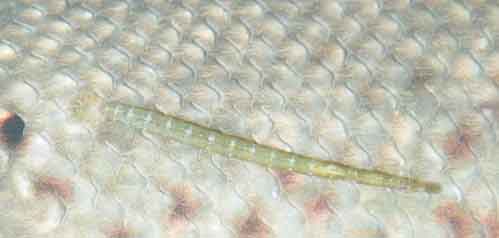
Piscicola geometra
Order-4: Arhynchobdellida
- They are commonly known as freshwater or terrestrial leeches, proboscisless leeches, jawed leeches etc.
- They have relatively stout, slightly flattened body.
- The posterior end of the body is broader with tapering anterior end.
- They have a small anterior sucker with the mouth, and a larger posterior sucker.
- The body length ranges from minute to 20 cm.
Example:Hirudo medicinalis, Haemopis sanguisuga
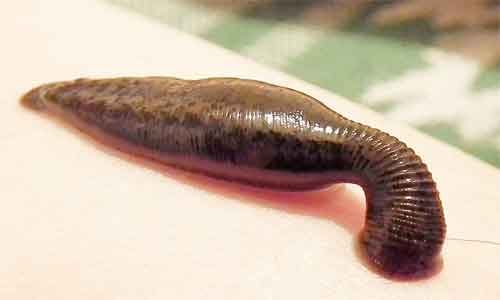
Hirudo medicinalis (medicinal leech)
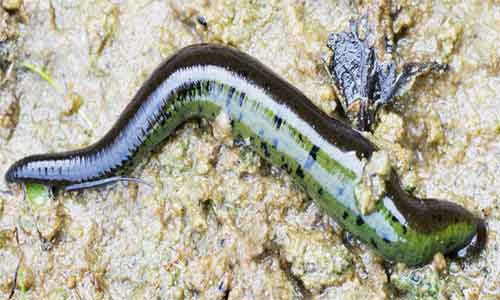
Haemopis sanguisuga
Concluding Remarks
The annelids are triploblastic invertebrate organisms with true coelom and bilaterally symmetrical body. They can survive in various ecological conditions, some live in marine environments, others live in fresh water, and yet others can live in moist terrestrial environments. Their body coelom is filled with coelomic fluid which acts as hydrostatic skeleton. The ceolomic fluid also helps for burrowing and locomotion.
Some burrower annelids such as earthworms loosen the soil and help to mix the soil with organic and mineral matter and make the soil more fertile. Earthworms also offer food for many birds such as robins, stroke, mammals like shrews, badgers, etc. Some annelids like leeches are harm to other animals due to their blood-sucking behavior. Besides these, Hirudo medicinalis is used to help in microsurgery. In this case, their saliva provides anti-inflammatory compounds and anticoagulants which prevent tumors from spreading.
You might also read: Phylum Platyhelminthes : General Characteristics and Its Classification

